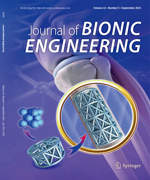High-resolution Particle-Image Velocimetry (PIV) and time-resolved force measurements were performed to analyze the impact of the comb-like structure on the leading edge of barn owl wings on the flow field and overall aerodynamic performance. The Reynolds number was varied in the range of 40,000 to 120,000 and the range of angle of attack was 0? to 6? for the PIV and −15? to +20? for the force measurements to cover the full flight envelope of the owl. As a reference, a wind-tunnel model which possessed a geometry based on the shape of a typical barn owl wing without any owl-specific adaptations was built, and measurements were performed in the aforementioned Reynolds number and angle of attack range. This clean wing model shows a separation bubble in the distal part of the wing at higher angles of attack. Two types of comb-like structures, i.e., artificial serrations, were manufactured to model the owl’s leading edge with respect to its length, thickness, and material properties. The artificial structures were able to reduce the size of the separation region and additionally cause a more uniform size of the vortical structures shed by the separation bubble within the Reynolds number range investigated, resulting in stable gliding flight independent of the flight velocity. However, due to increased drag coefficients in conjunction with similar lift coefficients, the overall aerodynamic performance, i.e., lift-to-drag ratio is reduced for the serrated models. Nevertheless, especially at lower Reynolds numbers the stabilizing effect of the uniform vortex size outperforms the lower aerodynamic performance.

 Table of Content
Table of Content
 Table of Content
Table of Content